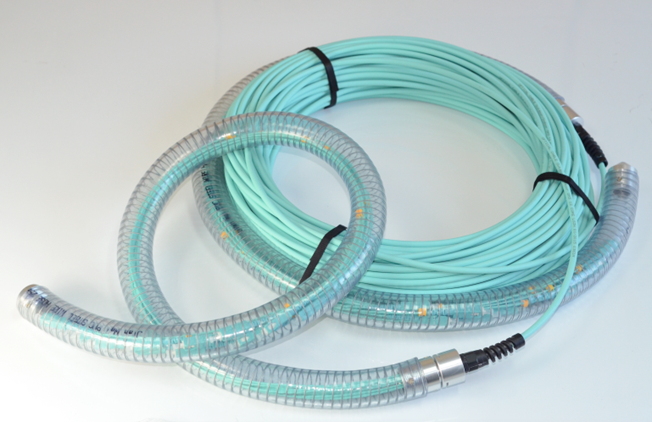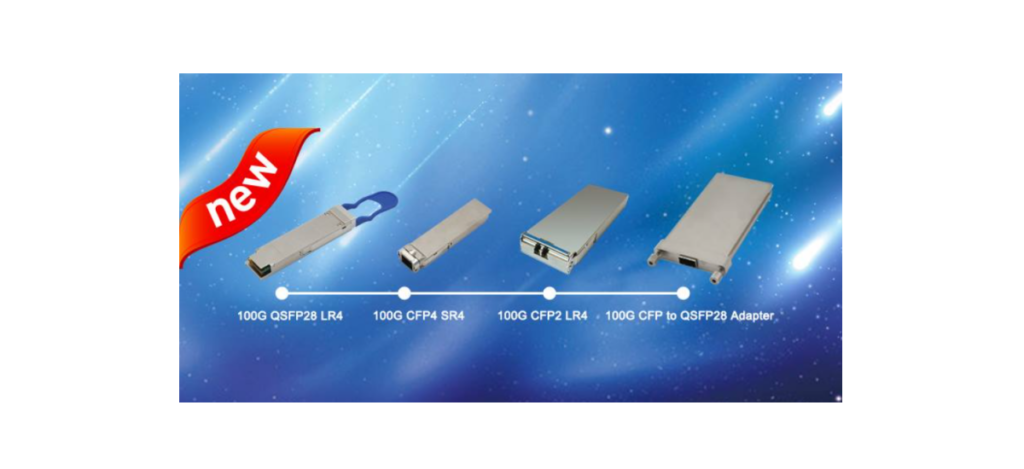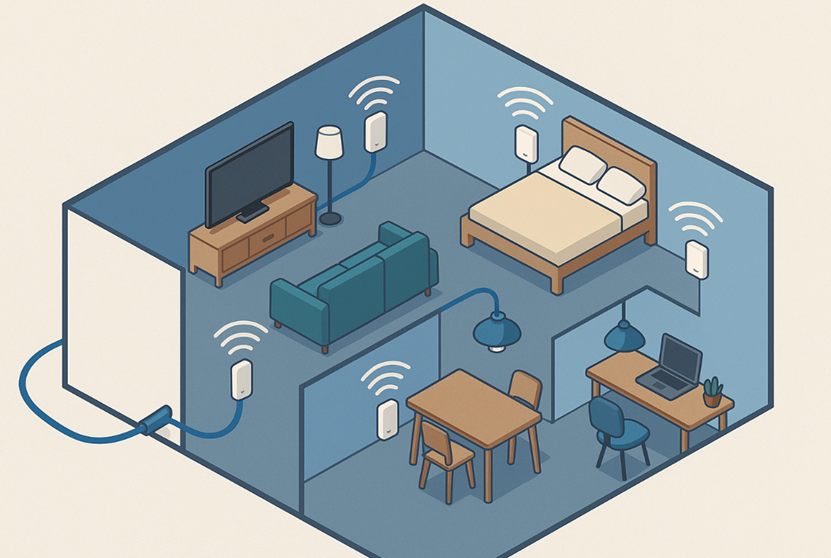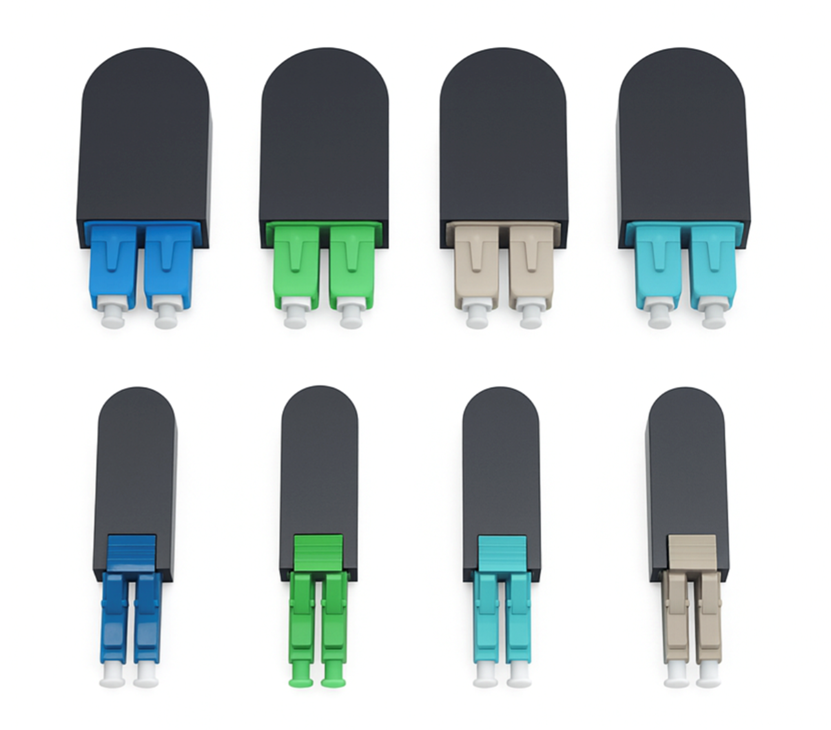The lifecycle of fiber optic products involves multiple stages, from initial design and manufacturing to deployment, maintenance, and eventual upgrades or replacement. Proper lifecycle management ensures reliability, cost-effectiveness, and minimal environmental impact (2). In this article, we’ll delve deeply into actionable recommendations tailored to each stage of the lifecycle, providing practical insights and examples to guide you through the process.
For more information about advanced fiber optic solutions, visit www.holightoptic.com or contact sales@holightoptic.com (3).
1. Design and Development Phase
1.1 Material Selection
Choosing high-quality materials is critical for ensuring durability and performance. For example, single-mode fibers are ideal for long-distance applications due to their low attenuation, typically less than 0.2 dB/km , while multi-mode fibers are better suited for short-range, high-bandwidth needs such as data centers (4). Additionally, selecting materials with resistance to environmental factors like UV exposure, moisture, and temperature fluctuations can significantly extend the product’s lifespan. Gel-filled cables, for instance, provide protection against moisture ingress in underground installations, making them a preferred choice in wet environments (9).
Material selection also impacts future scalability. For instance, using bend-insensitive fibers allows for tighter bends without signal loss, making them ideal for dense urban environments where space is limited (6). By anticipating future demands during the design phase, businesses can reduce the need for costly replacements later. For example, designing cables with higher strand counts than currently required ensures they can handle increased data loads as network demands grow, avoiding the need for additional trenching or infrastructure overhauls (13).
1.2 Future-Proofing Designs
To accommodate future technological advancements, fiber optic products should be designed with modularity and adaptability in mind. For instance, connectors with interchangeable components allow for easy upgrades without replacing the entire system (6). Similarly, integrating features like pre-terminated cables simplifies installation and reduces labor costs during upgrades. A telecommunications provider in Europe demonstrated the value of this approach by designing its fiber optic infrastructure with 288-fiber cables, even though only 144 fibers were initially required. This decision allowed them to double their capacity without additional trenching when demand increased, saving millions in installation costs (17).
Future-proofing also involves considering emerging technologies. For example, hollow-core fibers, which transmit light through air instead of glass, promise lower latency and higher speeds, making them ideal for time-sensitive applications like autonomous vehicles and financial trading (19). By staying informed about such advancements, designers can create systems that remain relevant for years to come.
2. Deployment Phase
2.1 Proper Installation Techniques
Improper installation can lead to signal loss, increased latency, and even physical damage. Certified technicians should handle installation to ensure adherence to bending radius specifications and proper splicing techniques. For example, exceeding the minimum bend radius of a fiber optic cable can cause micro-cracks, leading to attenuation and eventual failure (7). Using fusion splicers instead of mechanical splices ensures lower insertion loss and better long-term reliability. Additionally, leaving slack loops during installation accommodates future repairs or expansions without disrupting the entire network, a practice that has proven effective in reducing downtime during maintenance (8).
A telecommunications provider reduced post-deployment issues by 30% after implementing technician training programs focused on best practices, such as using fusion splicers and maintaining clean work environments (8). These efforts not only improved installation quality but also extended the lifespan of the deployed infrastructure.
2.2 Environmental Considerations
Outdoor fiber optic cables must withstand harsh conditions like extreme temperatures, UV radiation, and moisture. Using weather-resistant coatings and protective conduits can significantly enhance durability (9). For buried cables, armored designs protect against rodent interference and accidental digging, which are common causes of cable damage (14). In coastal areas prone to flooding, submarine fiber optic cables are designed with hydrophobic materials and reinforced outer layers to withstand water pressure and saltwater corrosion.
These specialized designs ensure uninterrupted connectivity even in challenging environments, as demonstrated by undersea cables connecting continents across thousands of kilometers (15).
3. Maintenance Phase
3.1 Regular Inspections
Routine inspections are essential for identifying early signs of wear or damage. Tools like Optical Time Domain Reflectometers (OTDRs) can detect faults such as micro-bends, breaks, or splice losses with pinpoint accuracy (10). Inspections should be conducted at regular intervals, especially in high-risk areas like construction zones or regions prone to natural disasters. For example, after a hurricane, OTDR testing can identify breaks caused by fallen debris, enabling swift repairs and minimizing downtime (16).
In addition to OTDR testing, visual inspections of connectors and end-faces are crucial for maintaining optimal performance. Dust, dirt, and moisture contamination can degrade signal integrity, particularly in high-speed networks. Regularly cleaning fiber end-faces using lint-free wipes and inspecting them with optical microscopes ensures consistent performance. Even microscopic contaminants can cause significant signal loss, highlighting the importance of meticulous maintenance practices (11).
3.2 Cleaning and Repairs
Using automated cleaning tools for large-scale deployments ensures consistency and reduces labor costs. Additionally, storing spare connectors and patch cords on-site expedites repairs during emergencies, preventing prolonged network outages (12). Dr. Emily Zhang, a fiber optics specialist, emphasizes: “Proactive maintenance is key to extending the lifecycle of fiber optic products. Regular cleaning and testing prevent costly failures” (12).
4. Upgrade and Replacement Phase
4.1 Technology Upgrades
As network demands increase, older fiber optic systems may need upgrades. For example, transitioning from multi-mode to single-mode fibers can support higher bandwidth requirements and longer distances (13). Similarly, integrating hollow-core fibers can reduce latency and improve performance for time-sensitive applications like autonomous vehicles and financial trading (19).
When planning upgrades, backward compatibility is crucial to avoid disrupting existing systems. For instance, using adapters that support both legacy and modern connectors ensures seamless integration during transitions. This approach minimizes downtime and reduces the need for extensive retraining or infrastructure overhauls (20).
4.2 Sustainable Disposal Practices
When replacing outdated products, follow eco-friendly disposal methods. Recycle materials like glass fibers and plastic coatings to minimize environmental impact (14). Partnering with specialized recycling firms ensures compliance with environmental regulations and promotes sustainability. A major telecom operator partnered with an e-waste recycling firm to recycle over 50,000 km of decommissioned fiber optic cables, recovering valuable materials like silica and reducing landfill waste by 40% (15).
5. Lifecycle Management Best Practices
Maintaining detailed records of product specifications, installation dates, and maintenance activities helps track performance trends and plan future upgrades effectively (16). Digital tools like asset management software streamline documentation and monitoring processes, providing real-time insights into network health. Implementing predictive maintenance systems that use AI to analyze data from OTDR tests and environmental sensors can predict potential failures before they occur, reducing downtime and repair costs (18).
Engaging with manufacturers, service providers, and end-users ensures alignment with evolving industry standards and user needs. Hosting quarterly meetings with stakeholders to review performance metrics and discuss upcoming upgrades fosters innovation and ensures proactive planning (19).
6. FAQs About Fiber Optic Product Lifecycle Management
Q1: How long do fiber optic products typically last?
With proper maintenance, fiber optic cables can last 20–30 years , though their performance may degrade over time due to environmental factors or wear (18).
Q2: What tools are used for monitoring fiber optic performance?
Tools like OTDRs, optical power meters, and visual inspection kits are commonly used to monitor and maintain fiber optic systems (10).
Q3: How can I extend the lifespan of fiber optic products?
Regular maintenance, proper installation, and timely upgrades are key to extending the lifespan of fiber optic products (19).
7. Conclusion
Effective lifecycle management of fiber optic products is essential for ensuring reliable performance, reducing costs, and minimizing environmental impact. By following best practices at each stage—design, deployment, maintenance, and upgrades—businesses can maximize the value of their fiber optic investments (20).
For tailored fiber optic solutions, visit www.holightoptic.com or email sales@holightoptic.com (3).
External Links








